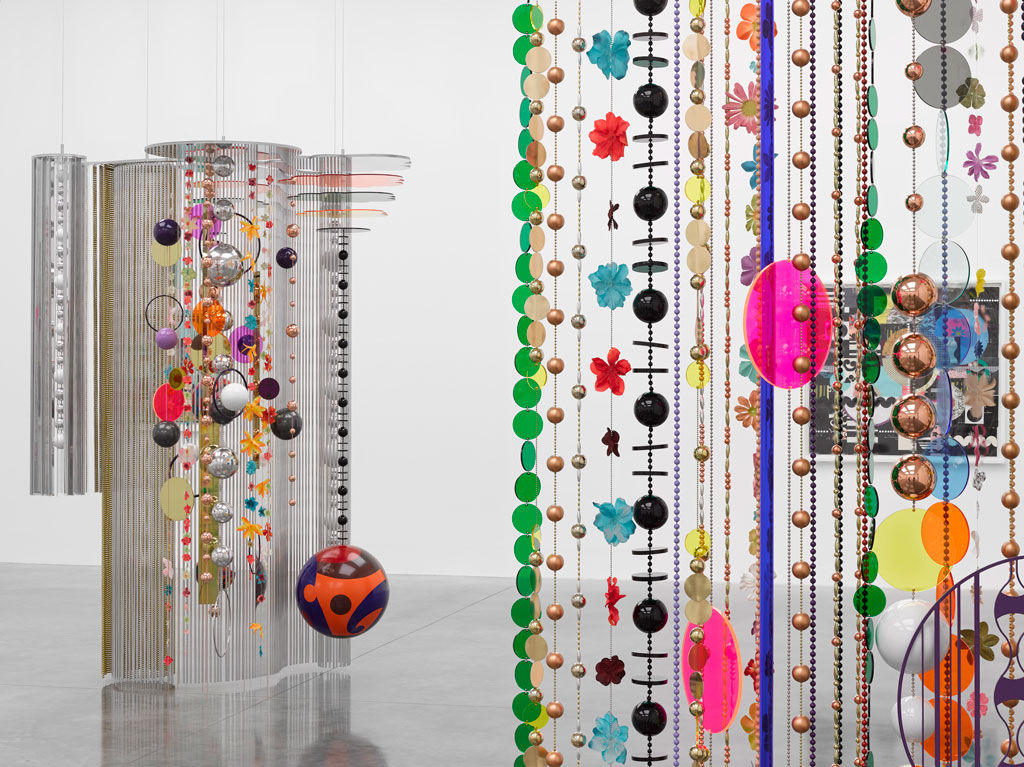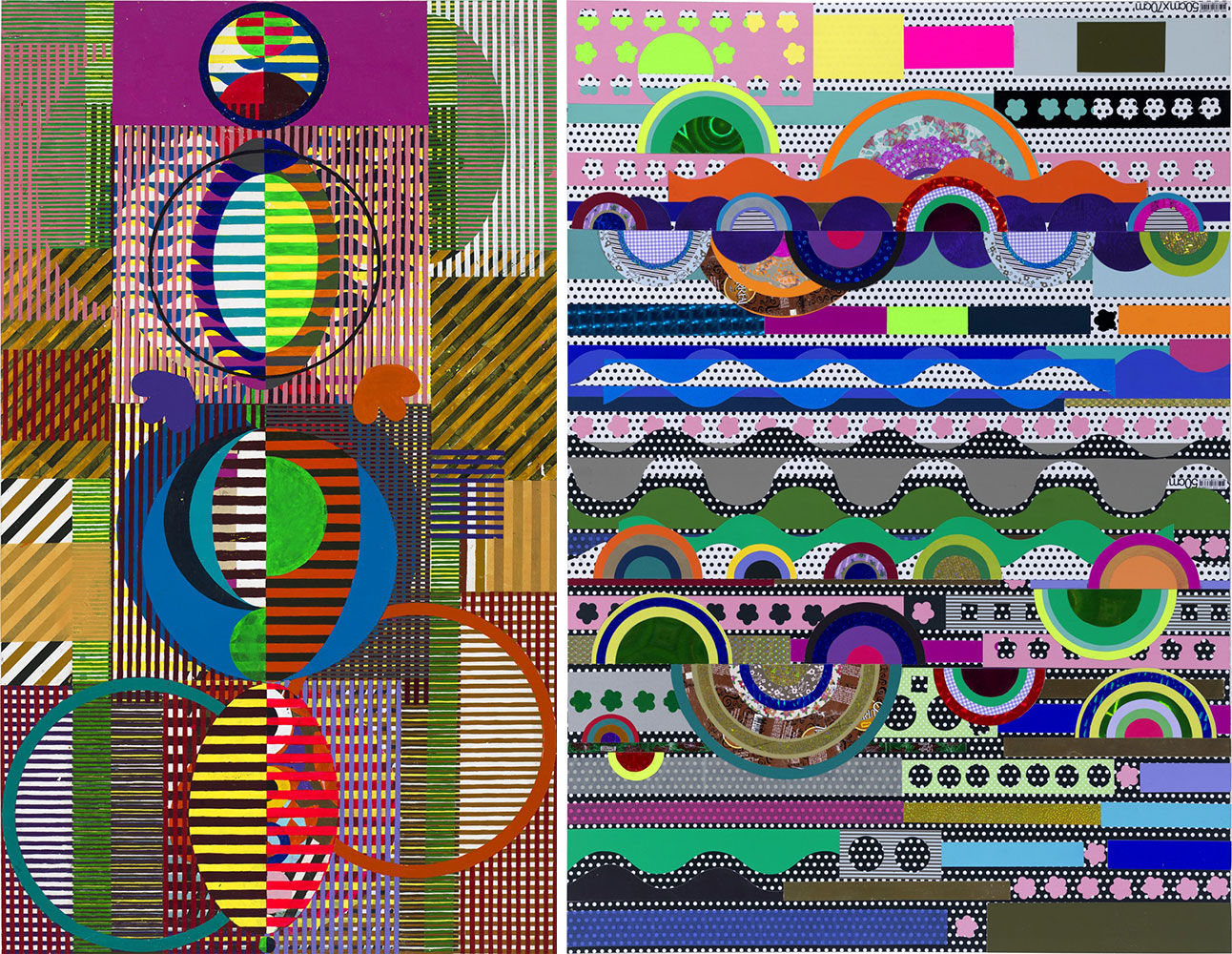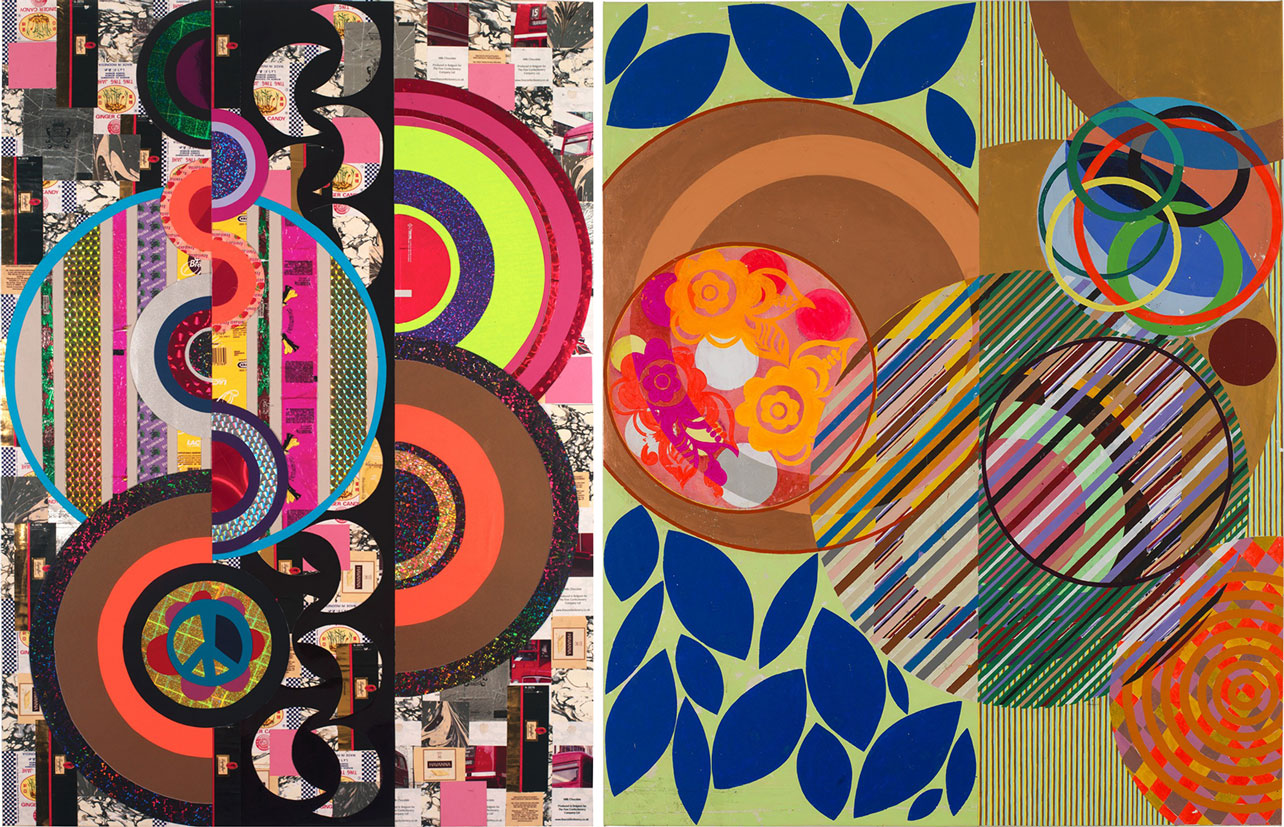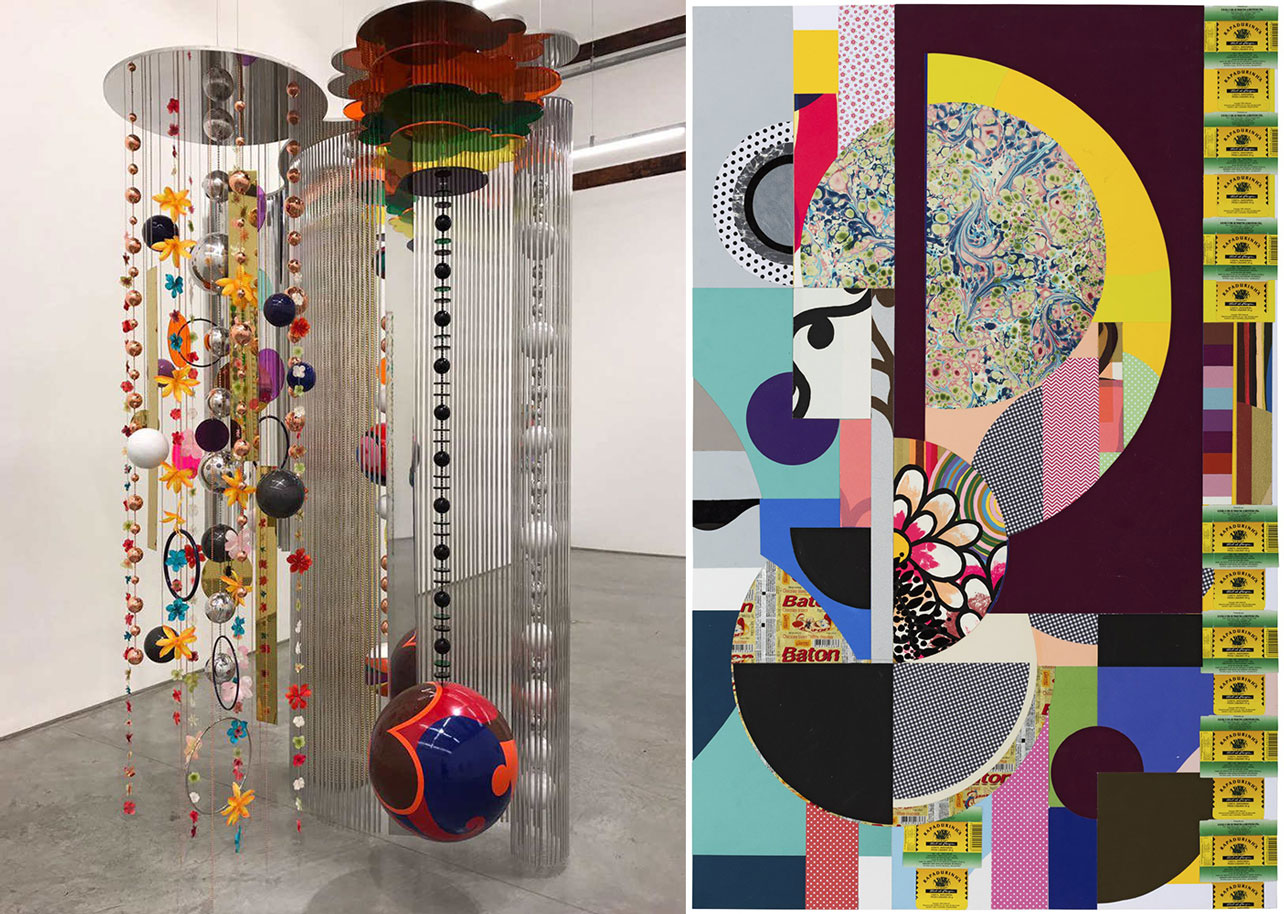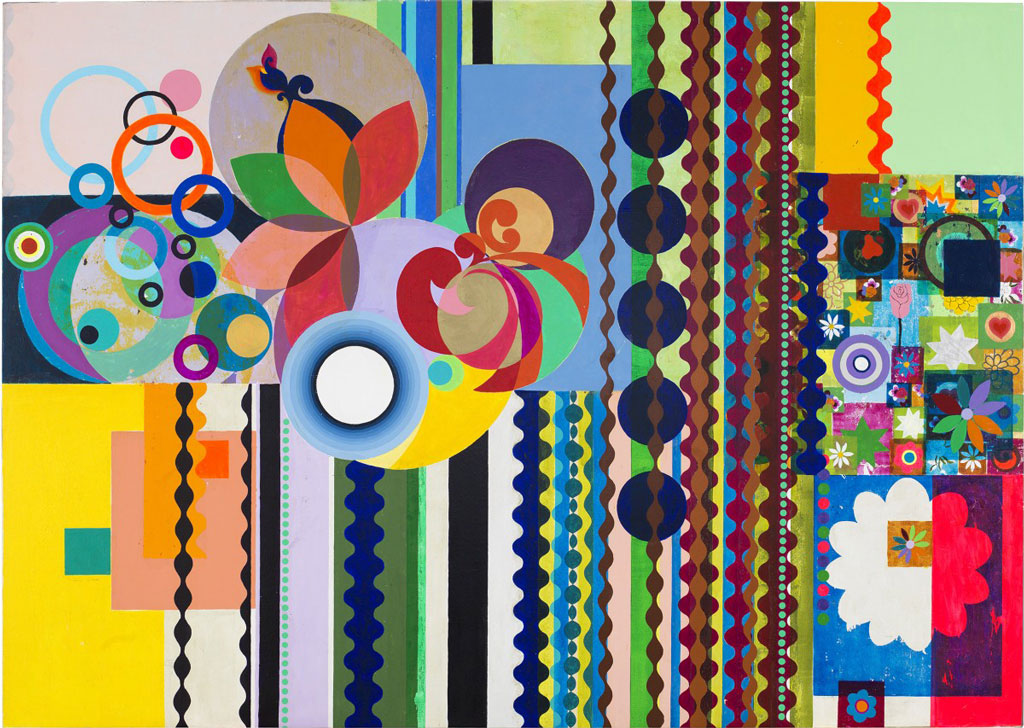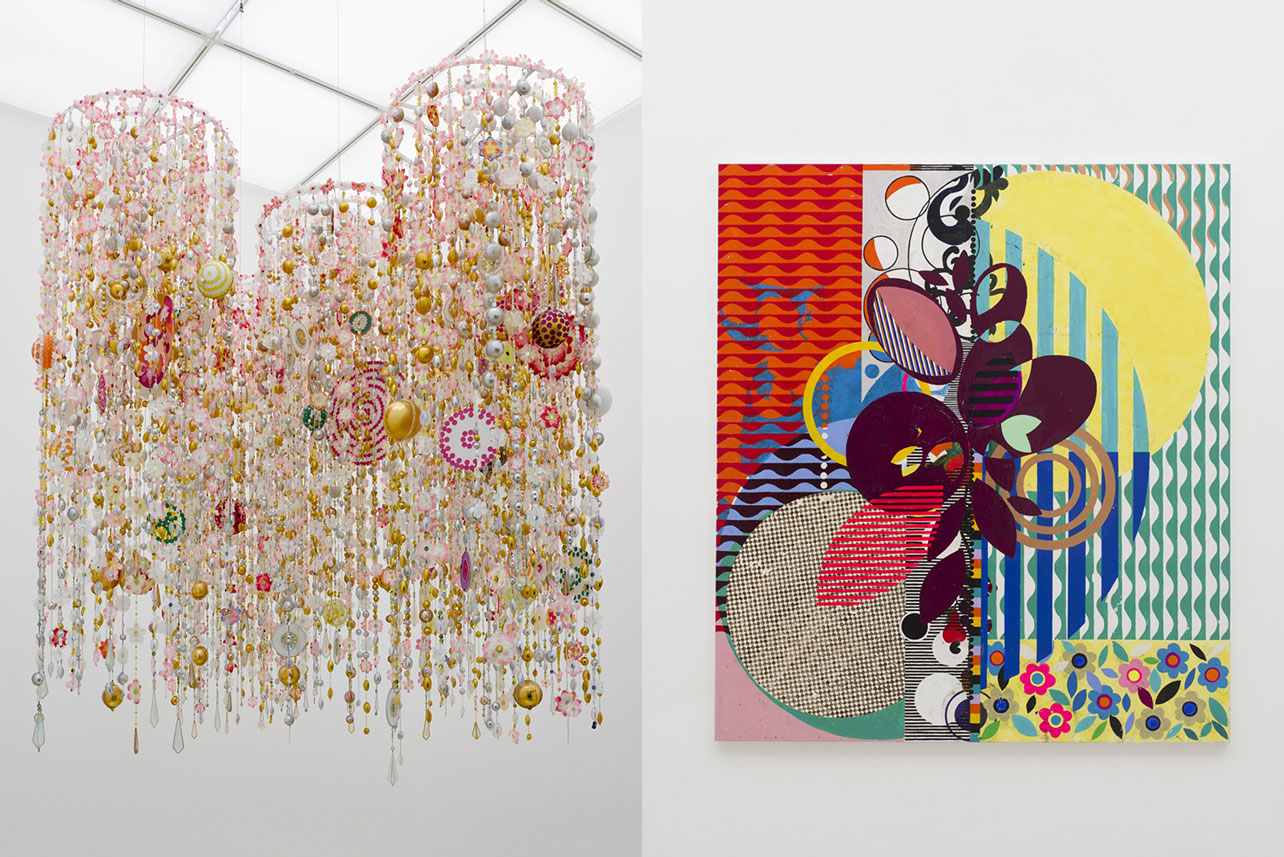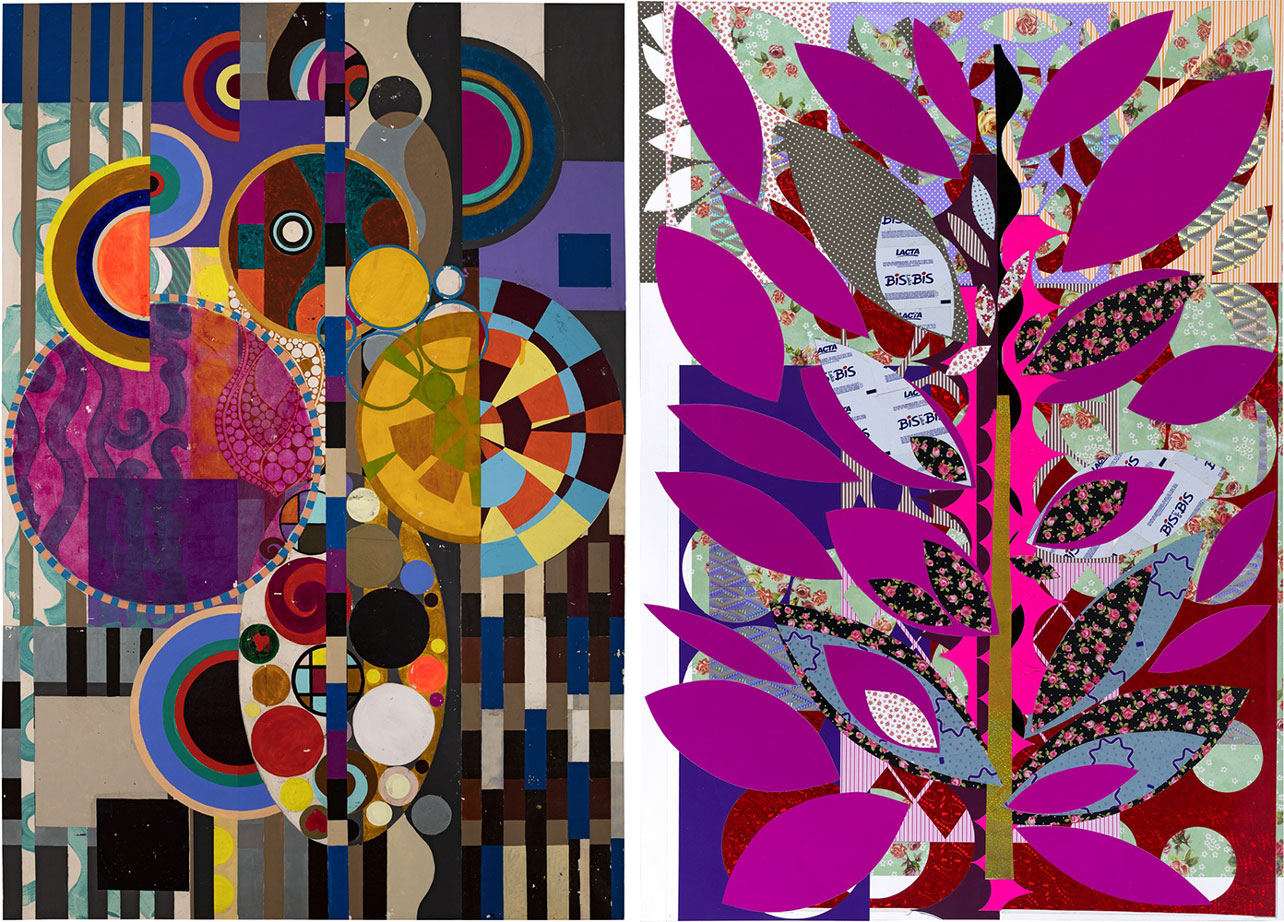ART-TRIBUTE:Weaving and other Practices… Beatriz Milhazes
 We continue our Tribute with Beatriz Milhazes (1960- ), the Brazilian artist fuses modernist styles of painting with the emblems of her cultural heritage. Her abstract compositions are typically layered with imagery, particularly floral designs and ornate circular medallions. Milhazes draws upon local visual traditions as diverse as Baroque colonial art, folk styles of decorative painting and the mass-produced textiles, wallpaper, and ceramic tile of her everyday surroundings.
We continue our Tribute with Beatriz Milhazes (1960- ), the Brazilian artist fuses modernist styles of painting with the emblems of her cultural heritage. Her abstract compositions are typically layered with imagery, particularly floral designs and ornate circular medallions. Milhazes draws upon local visual traditions as diverse as Baroque colonial art, folk styles of decorative painting and the mass-produced textiles, wallpaper, and ceramic tile of her everyday surroundings.
By Dimitris Lempesis
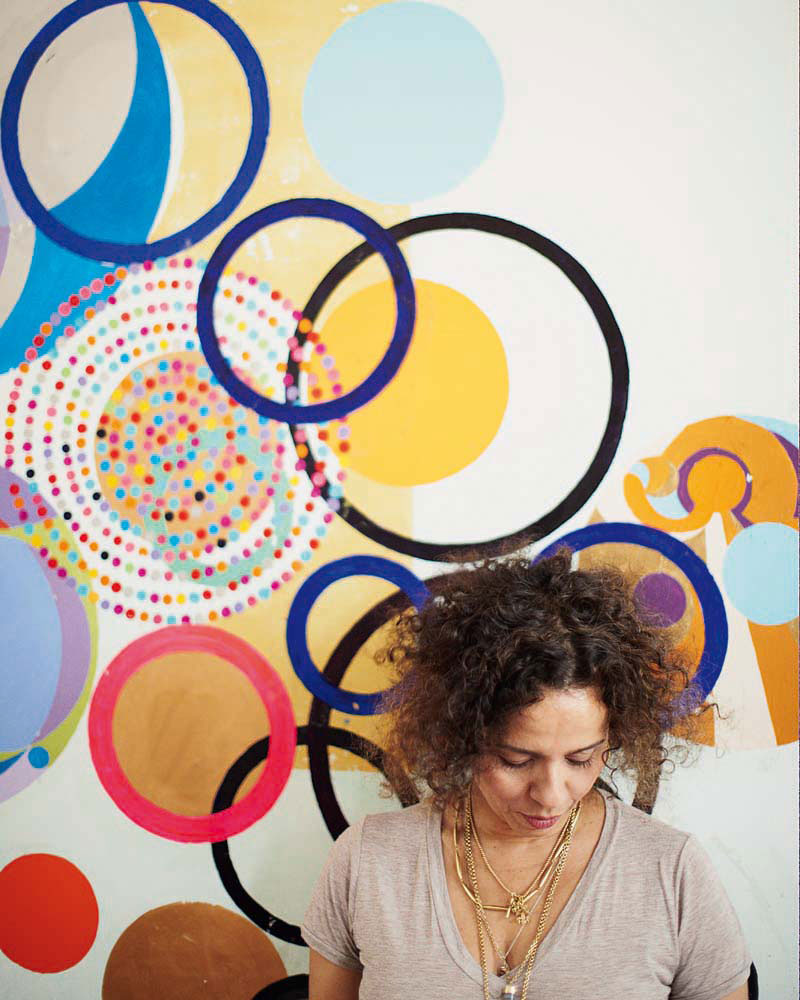 Beatriz Milhazes was born in Rio de Janeiro, she studied public communication at Faculdades Integradas Hélio Alonso University, Rio de Janeiro (1978–81), and attended the city’s Escola de artes visuais do Parque Lage (1980–82). Her practice includes painting, drawing and collage. Characterised by sensual color, optical movement and energetic visual cadences, her abstract work fuses a diverse repertoire of images and forms. Combining elements from her native Brazilian culture with European abstraction, her colorful, densely layered works are held in a state of tension, balanced carefully between order and chaos, rational structure and spontaneity. Often pushed to their compositional limit, with cascading, proliferating forms overlaid across the canvas, her paintings seem at a point of collapse, ready to engulf the viewer in an explosion of form and color. Influenced by early Brazilian artists, in particular the work of Tarsila do Amaral, as well as Matisse, Op Art and Mondrian’s late work, Milhazes combines depth, relief, and contrasts of form, texture and space her pictures. Her distinctly Brazilian, vernacular palette and unique motifs reflect a fascination with ‘Carnaval’ and the print designs of popular fabrics, as well as Baroque colonial architecture, Brazil’s tropical flora, its ceramic tiles, costumes or jewellery. These influences leak into the paintings and emerge as a colorful amalgamation of visual indexes that are able to syncopate high and low culture, art and craft. Built on the principle of collage, Milhazes employs a decal technique in her painting whereby images are painted on sheets of plastic and then applied to the canvas by a transfer process, creating a smooth surface which nonetheless reveals the process of its own construction. At times, the paint tears or remains stuck and these torn and exposed elements create points of erosion which give the impression of the canvas condensing multiple layers of time in one image. This process of image superimposition and intersections results in compositions that incorporate a sense of entropy or transformation. For example, the circle motif can spiral into a bull’s-eye target, then revert into a piece of crochet or lace, creating what the artist has called a geometry of “feminine overstatements” which points to an association with crafts traditionally done by women such as lacemaking, sewing and beadwork. Likewise, in her paper collages, Milhazes overlays an array of various colorful papers such as wrapping paper, candy-wrapper paper, marbled paper and chocolate wrappers, to create compositions with a proliferating, ornamental patterning that keeps the eye moving restlessly across the image surface.
Beatriz Milhazes was born in Rio de Janeiro, she studied public communication at Faculdades Integradas Hélio Alonso University, Rio de Janeiro (1978–81), and attended the city’s Escola de artes visuais do Parque Lage (1980–82). Her practice includes painting, drawing and collage. Characterised by sensual color, optical movement and energetic visual cadences, her abstract work fuses a diverse repertoire of images and forms. Combining elements from her native Brazilian culture with European abstraction, her colorful, densely layered works are held in a state of tension, balanced carefully between order and chaos, rational structure and spontaneity. Often pushed to their compositional limit, with cascading, proliferating forms overlaid across the canvas, her paintings seem at a point of collapse, ready to engulf the viewer in an explosion of form and color. Influenced by early Brazilian artists, in particular the work of Tarsila do Amaral, as well as Matisse, Op Art and Mondrian’s late work, Milhazes combines depth, relief, and contrasts of form, texture and space her pictures. Her distinctly Brazilian, vernacular palette and unique motifs reflect a fascination with ‘Carnaval’ and the print designs of popular fabrics, as well as Baroque colonial architecture, Brazil’s tropical flora, its ceramic tiles, costumes or jewellery. These influences leak into the paintings and emerge as a colorful amalgamation of visual indexes that are able to syncopate high and low culture, art and craft. Built on the principle of collage, Milhazes employs a decal technique in her painting whereby images are painted on sheets of plastic and then applied to the canvas by a transfer process, creating a smooth surface which nonetheless reveals the process of its own construction. At times, the paint tears or remains stuck and these torn and exposed elements create points of erosion which give the impression of the canvas condensing multiple layers of time in one image. This process of image superimposition and intersections results in compositions that incorporate a sense of entropy or transformation. For example, the circle motif can spiral into a bull’s-eye target, then revert into a piece of crochet or lace, creating what the artist has called a geometry of “feminine overstatements” which points to an association with crafts traditionally done by women such as lacemaking, sewing and beadwork. Likewise, in her paper collages, Milhazes overlays an array of various colorful papers such as wrapping paper, candy-wrapper paper, marbled paper and chocolate wrappers, to create compositions with a proliferating, ornamental patterning that keeps the eye moving restlessly across the image surface.


